Diary studies, a form of diary research, are used as a qualitative research method in user experience (UX) design, where researchers delve deeper into user behavior, motivation, and pain points over time.
Imagine getting a front-row seat to someone’s daily experience with your product — their thoughts, frustrations, and small victories. That’s what diary studies deliver.
Instead of one-time feedback, users log their real-life interactions and emotions over time, giving you a raw, honest view of how they truly engage with your product or service.
Especially useful in the activation phase, diary studies highlight patterns and needs that other methods often miss. By centering the user’s voice, they help designers make more informed, human-centered decisions that reflect real-world use.
Timeline of Activities for Diary Studies
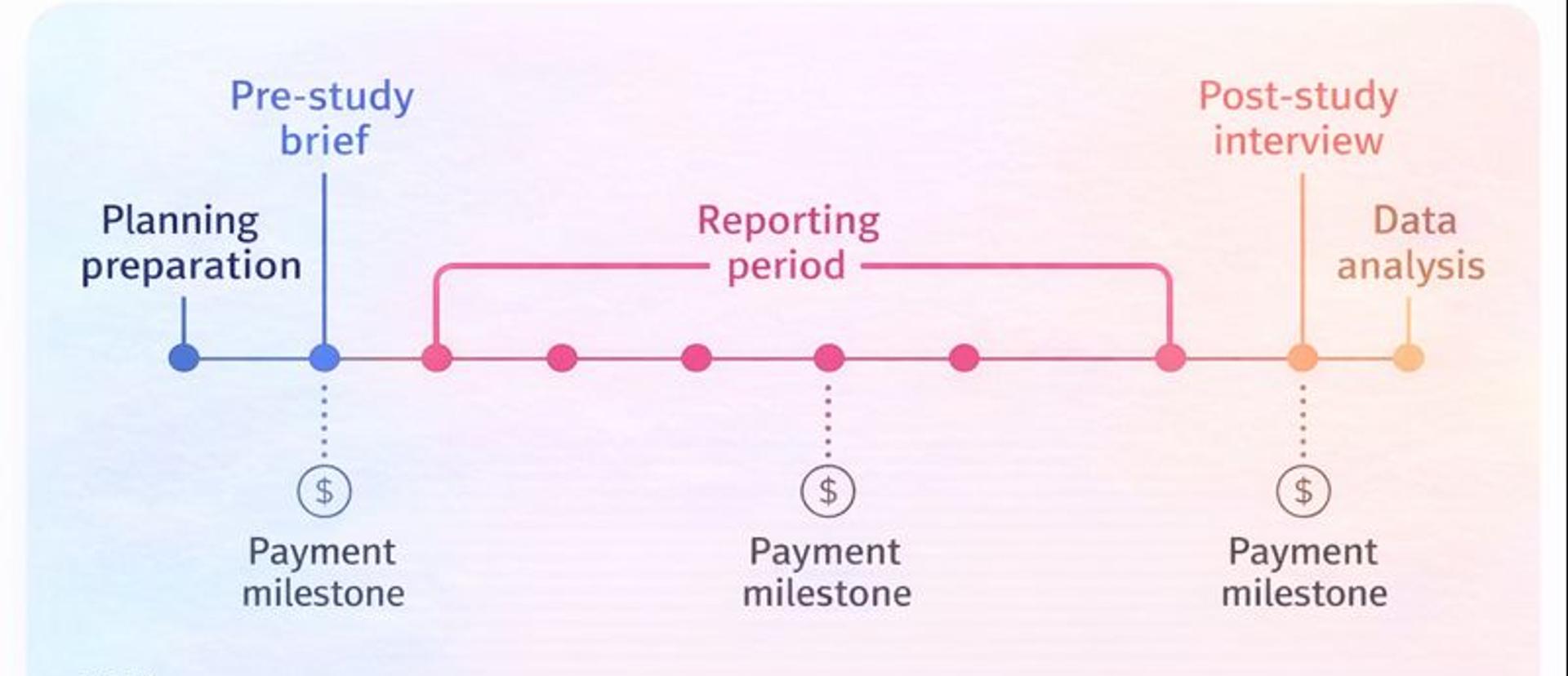
What Are Diary Studies?
Diary studies are storytelling meets UX insight. Instead of observing users from a distance, you invite them to take the lead. They document their own experiences, thoughts, and interactions with a product in real time.
Think of it as their world, in their words, captured as it unfolds.
Most diary studies involve 10 to 15 participants over 2 weeks to 2 months. They offer a rich window into users' daily routines. You get nuanced, emotional, and contextual data that numbers alone can't reveal.
These diaries take many forms. Written reflections capture detailed thoughts. Photo diaries show visual context. Video entries let participants walk you through their experiences. Each format offers a unique lens into honest, unfiltered insights.
The method excels during the activation phase of product development. It highlights patterns and needs that other research methods often miss. By putting users' voices at the center, diary studies help create more human-centered design decisions.
Types of Diary Studies
Diary studies can be categorized into several types based on their focus, scope, and methodology. Here are some common types of diary studies:
- Open Diary Studies: In open diary studies, participants are given a free-form diary to record their thoughts, feelings, and experiences without any specific prompts or guidelines. This approach allows for a wide range of diary entries, capturing spontaneous and diverse user insights.
- Closed Diary Studies: Closed diary studies provide participants with a structured diary containing specific prompts or questions to answer. This method ensures more focused and quantitative data, making it easier to analyze and compare responses across participants.
Open vs Closed Diary Studies
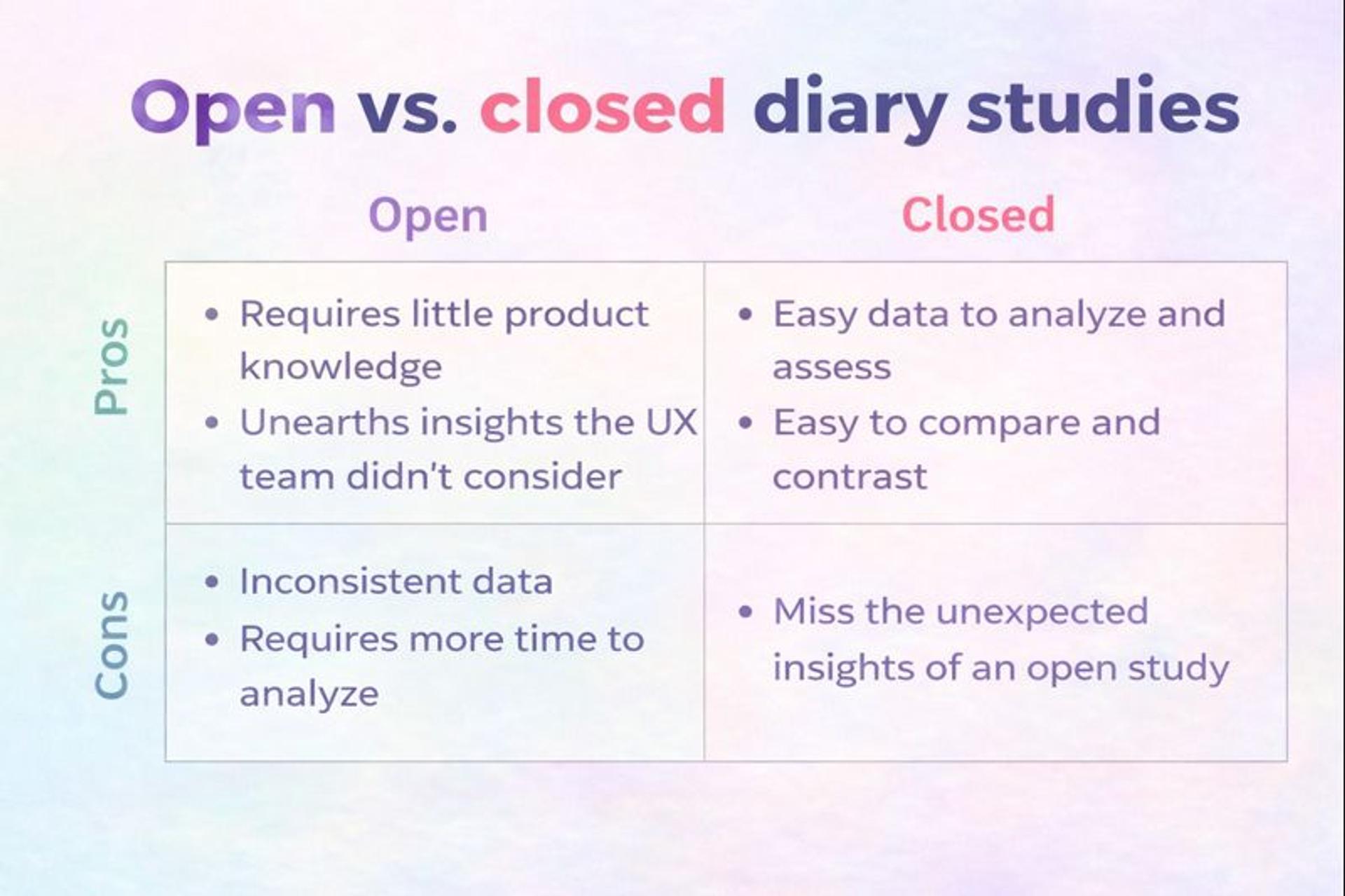
- Mixed Diary Studies: Combining elements of both open and closed diary studies, mixed diary studies offer participants some structure and guidance while still allowing for open-ended responses. This hybrid approach balances the depth of qualitative data with the consistency of structured inputs.
- Digital Diary Studies: Leveraging technology, digital diary studies use mobile apps or online platforms to collect diary entries from participants. This method facilitates real-time data collection and can include multimedia elements like photos and videos, enriching the qualitative data. Electronic diaries, which utilize digital formats for convenience and accessibility, can include multimedia elements like photos and videos, enriching the qualitative data.
- Paper Diary Studies: Traditional paper-based diaries are still a viable option for diary studies. Participants record their entries in physical diaries, which can be particularly useful in contexts where digital access is limited or when a tactile experience is preferred.
Each type of diary study offers unique advantages, allowing researchers to tailor their approach to the specific needs of their research questions and participant preferences.
When to Use Diary Studies
Diary studies shine in specific research scenarios. Use them when the temporal nature of user behavior matters for improving your product.
Longitudinal Insights Are Essential: This method excels at showing how user behavior, needs, and experiences change over time. You can track developments in how users interact with a product over weeks, months, or even years.
Understanding these patterns helps you make strategic plans. You see not just what users do, but how their relationship with your product evolves. This insight is critical for long-term product success.
Real User Context Matters: If you want to study how users behave in their actual environment, diary studies provide realistic portrayals. Participants capture experiences as they occur in their natural settings.
This authentic context reveals how your product fits into users' real lives. You understand their constraints, distractions, and motivations. These insights often differ dramatically from lab-based research findings.
Complex User Journeys Need Exploration: Diary studies excel at mapping complex user journeys that span multiple processes or stages. They help you understand the factors that drive decision-making and interaction patterns.
You can see how users move through your product over time. This reveals friction points, moments of delight, and opportunities for improvement that single-session studies miss. Understanding these journeys helps improve customer experience design.
Customer Journey Map
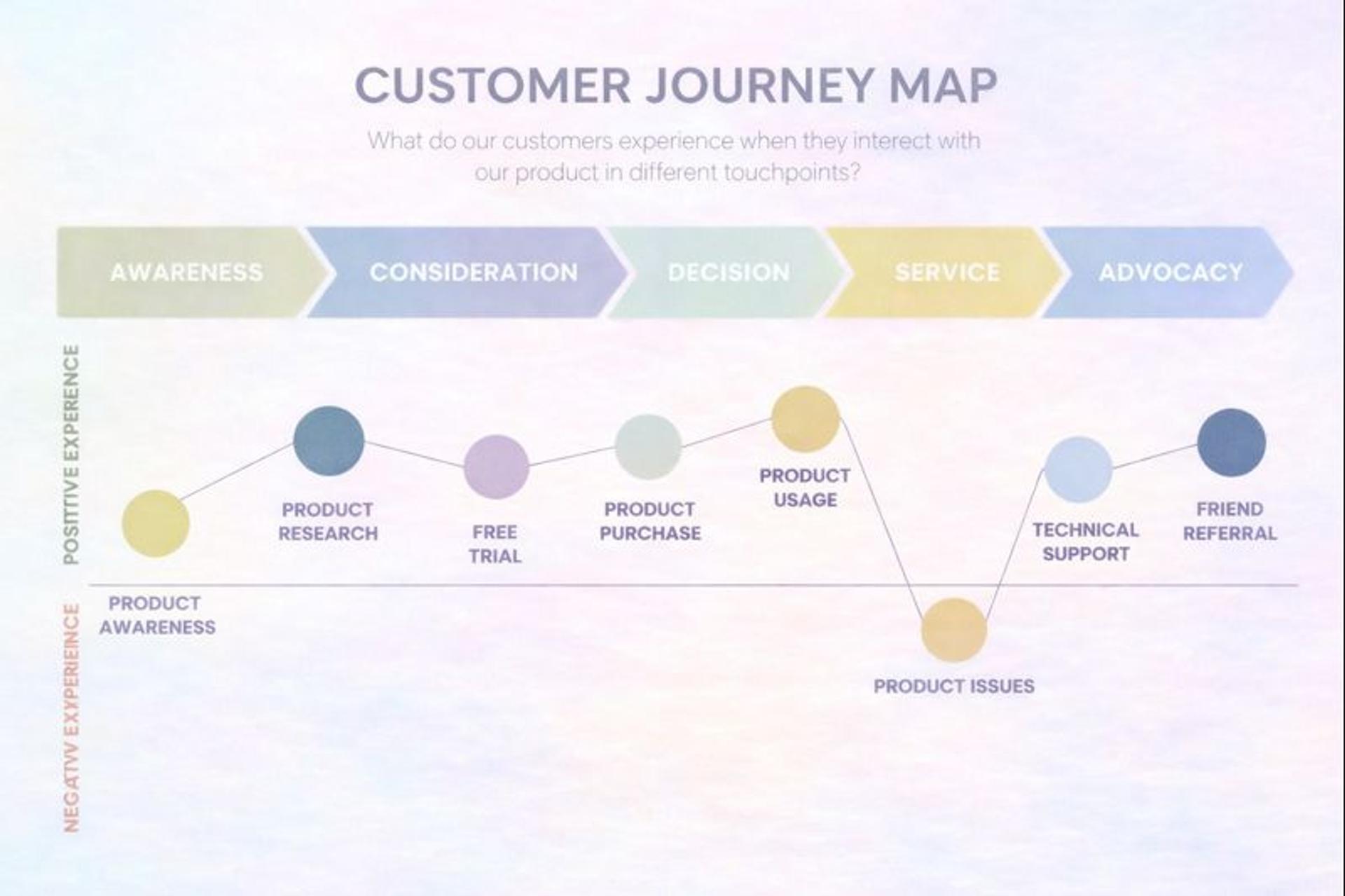
Emotional and Motivational Insights Are Crucial: Diary studies are perfect when you need to understand the emotional and motivational components of user behavior. Daily entries expose hidden emotions, feelings, and thoughts that interviews or surveys might miss.
This emotional depth gives designers a better chance to understand users and develop appropriate solutions. You see not just what users do, but why they do it and how it makes them feel.
Advantages Over Other UX Research Methods
- Rich, Contextual Data: The content obtained through diary studies is more qualitative and describes user experiences in detail. Diary studies reveal the nuances of user experiences and interactions, obscured by other, more quantitative approaches focusing on the general output.
- User-Centered Insights: Insights gathered through the research are more relevant as their procedure engages the user in a lead position. Such an approach allows the identification of opportunities to extend the research to the elements of design that may be less compelling but would result in more user-friendly products.
- Flexibility in Formats: The format of diary studies can, due to its remote nature, be written, pictorial, or visual, depending on the researcher's preference. This enhances the participants' engagement level as the users, who are the participants, choose the medium they feel is comfortable for them.
Benefits of Diary Studies
Diary studies offer several benefits for researchers, including:
Provides Qualitative Data with Real-World Context
Diary studies provide rich, qualitative data collected in the participant’s natural environment, offering a unique perspective on their thoughts, feelings, and behaviors.
This type of data is particularly useful for understanding complex research questions and gaining a deeper understanding of user behavior. Researchers can gather data that reflects genuine user experiences and interactions by capturing diary entries in real-world contexts.
Diary Studies Benefits
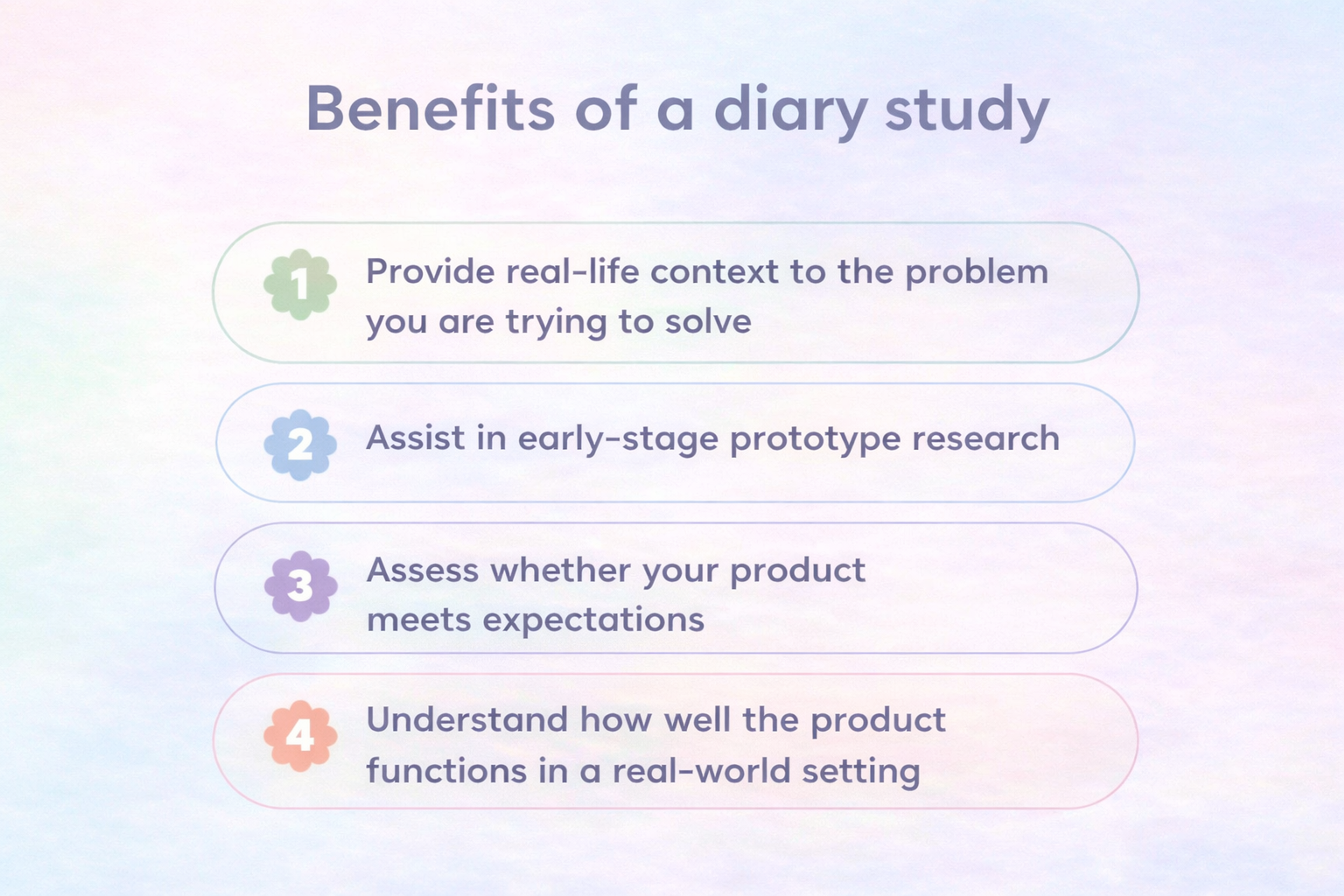
Allows for a Deep Level of Insight and Micro-Moments
Diary studies enable researchers to capture micro-moments and gain a deep level of insight into participants’ thoughts, feelings, and behaviors.
These micro-moments, often missed in other research methods, reveal the subtle nuances of user motivations, attitudes, and behaviors. This depth of insight is invaluable for understanding the emotional and cognitive aspects of user experiences.
Captures How Behaviors Change Over Time
One of the significant advantages of diary studies is their ability to capture how behaviors and attitudes change over time. By documenting user interactions over an extended period, researchers can observe trends, patterns, and shifts in user behavior.
This longitudinal perspective is particularly useful for understanding how users interact with products or services over time, providing insights that can inform long-term design and development strategies.
By using diary studies, researchers can better understand user behavior, motivations, and attitudes, ultimately informing design decisions and improving the user experience.
The qualitative data gathered through diary studies offers a comprehensive view of user experiences, making it a powerful tool in the UX research toolkit.
Planning Your Diary Study
Effective diary studies require careful planning. Each step ensures your research yields viable, actionable outcomes.
Setting Clear Objectives
Start by defining your research question and the specific understanding you want to achieve. This clarity guides all subsequent activities and keeps everyone focused on the research goals.
Decide whether you want to understand user activities, preferences, pain points, or behavioral changes. Clear objectives help you design better prompts and choose the right participants.
Determining Study Duration
Establish the study period based on your research objectives. Consider whether days, weeks, or months are needed to capture the full user experience you're studying.
The duration should be long enough to represent typical usage patterns. Short studies miss behavioral changes. Long studies risk participant fatigue. Find the balance that captures meaningful patterns without overwhelming participants.
For most UX research, 2-4 weeks works well. This timeframe captures routine behaviors while maintaining participant engagement.
Source: medium

Selecting Participants
Study success depends on careful participant selection. Target users who match your ideal user profile. Consider experience level, usage frequency, and demographic diversity.
Creating diverse groups yields more inclusive insights. Different user segments often reveal unique pain points and usage patterns. This diversity helps you design for broader audiences.
Screen participants for commitment level too. Diary studies require consistent participation over time. Choose people who can realistically maintain the documentation schedule.
Choosing Data Collection Methods
Outline your data collection approach based on study goals and participant preferences. Written diaries capture detailed thoughts. Photo diaries show visual context. Video diaries provide rich, multimedia insights.
Select tools that help participants document experiences easily and completely. The method shouldn't constrain important details or create barriers to participation.
Provide clear instructions on how to document experiences. This ensures consistency across participants and improves data quality.
Conducting a Diary Study
Diary studies need clear setup and steady support.
Start by briefing participants on goals and expectations. Explain what to record and why it matters. Give simple, detailed instructions so entries stay consistent and accurate. This helps people feel part of the project.
Provide prompts and guidelines to shape daily notes. Offer key questions and examples of experiences to include. Clear guidance raises the quality of the data.
Keep engagement high throughout the study. Check in regularly, share encouragement, and give feedback on entries. Schedule short touchpoints to answer questions and keep momentum.
Plan for common challenges. Time limits, awkward writing, or tool issues can derail progress. Offer fixes and reassurance so the study stays manageable.
Step-by-step Study Process
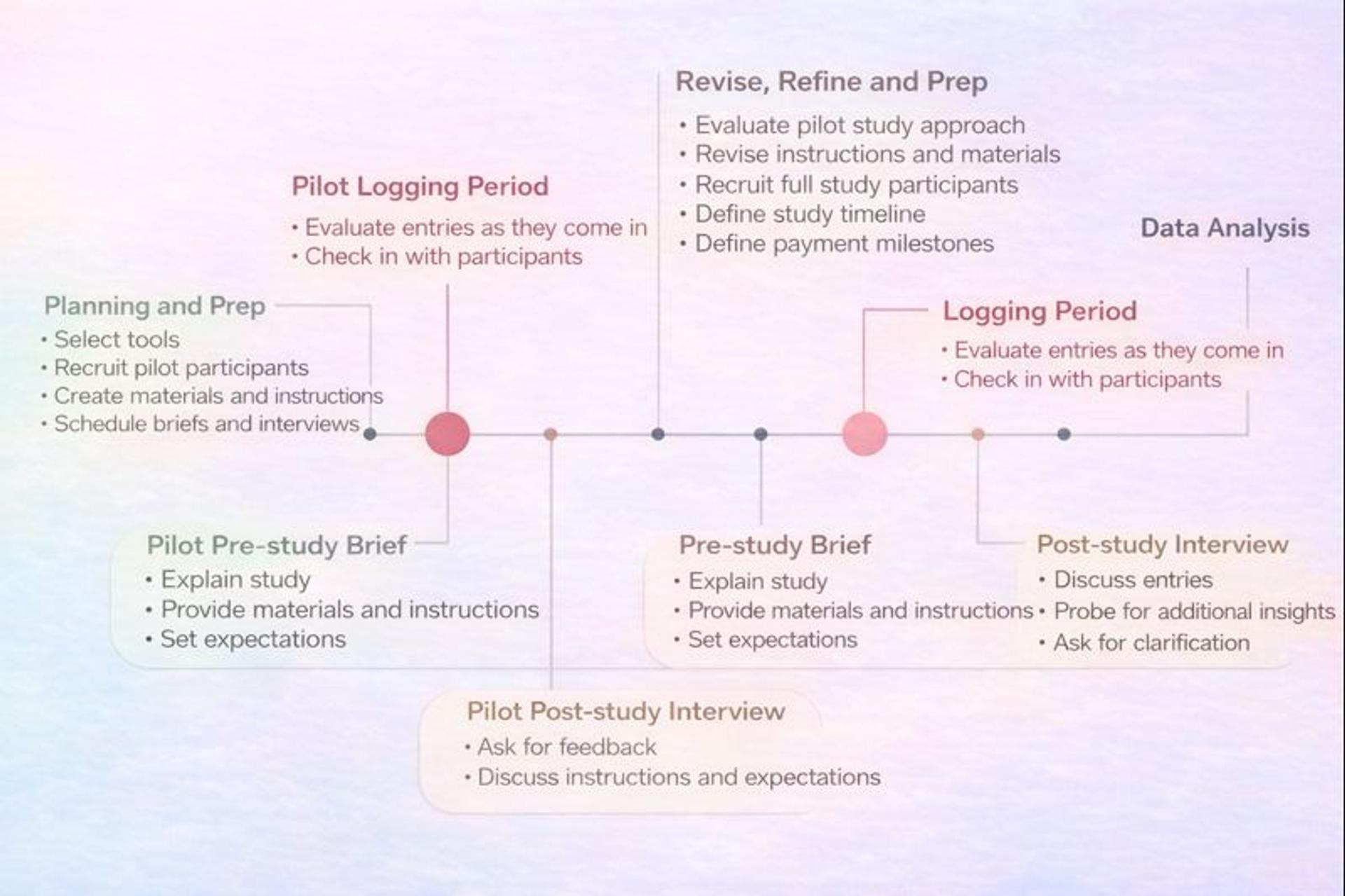
Diary Entries Structure
The structure of a diary entry during the user research study is critical as it affects the quantity and quality of the insights gathered.
To achieve this, a well-delineated structure should assist users in documenting their experiences to ensure they do not get lost. The following are the significant elements to be included in the design of the diary structure:
Date and Time Stamps
Ask participants to date their entries and log entries for every event that is recorded, which makes participants more productive and records more useful.
Do this naturally and document their experiences more easily. This initiates a systematic approach, which usually makes available data relating to changes in behavior about some places or objects.
Daily Reflection Sections
Set parts of the daily diaries in which participants can explain thoughts, feelings, or events during the day. This can be free response words like “With who are you most likely to spend the day with and why?” or “How satisfied were you with the product’s interaction?”
Specific Themes or Focus Areas
Based on the primary objective of the investigation, a dairy record may be designed in such a way as to control particular themes or focus areas relevant to the research.
For example, if the purpose is usability, the prompts can help the respondents recall and note things that were troublesome for them or features that stood out as enjoyable.
Final Summary or Reflection Section
The end of the study is where the participants are given a final section, which includes a summary or a reflection of the different activities carried out in the study.
Encourage them to think about how their perspectives have changed throughout the study and what patterns they have been able to see, if any.
Additionally, conducting a post-study interview can help gather detailed insights from participants, clarify responses, and explore specific experiences.
The researchers can make more efficient and exciting documentation by choosing a method of structuring the diary.
Analyzing Diary Study Data
After a diary study ends, analyze the data to find meaning.
Start by organizing and coding entries. Group notes by theme, person, or time. Tag repeated ideas, phrases, and feelings. Coding turns a large pile of notes into clear, usable data.
Next, look for patterns and insights. Spot common problems, repeated emotions, and features people often praise or criticize. These signals reveal real behaviors and preferences.
Then validate your findings with other methods. Compare diary insights with interviews, surveys, or usability tests. Triangulating evidence strengthens conclusions and guides better design and development decisions.
Qualitative Data Collection
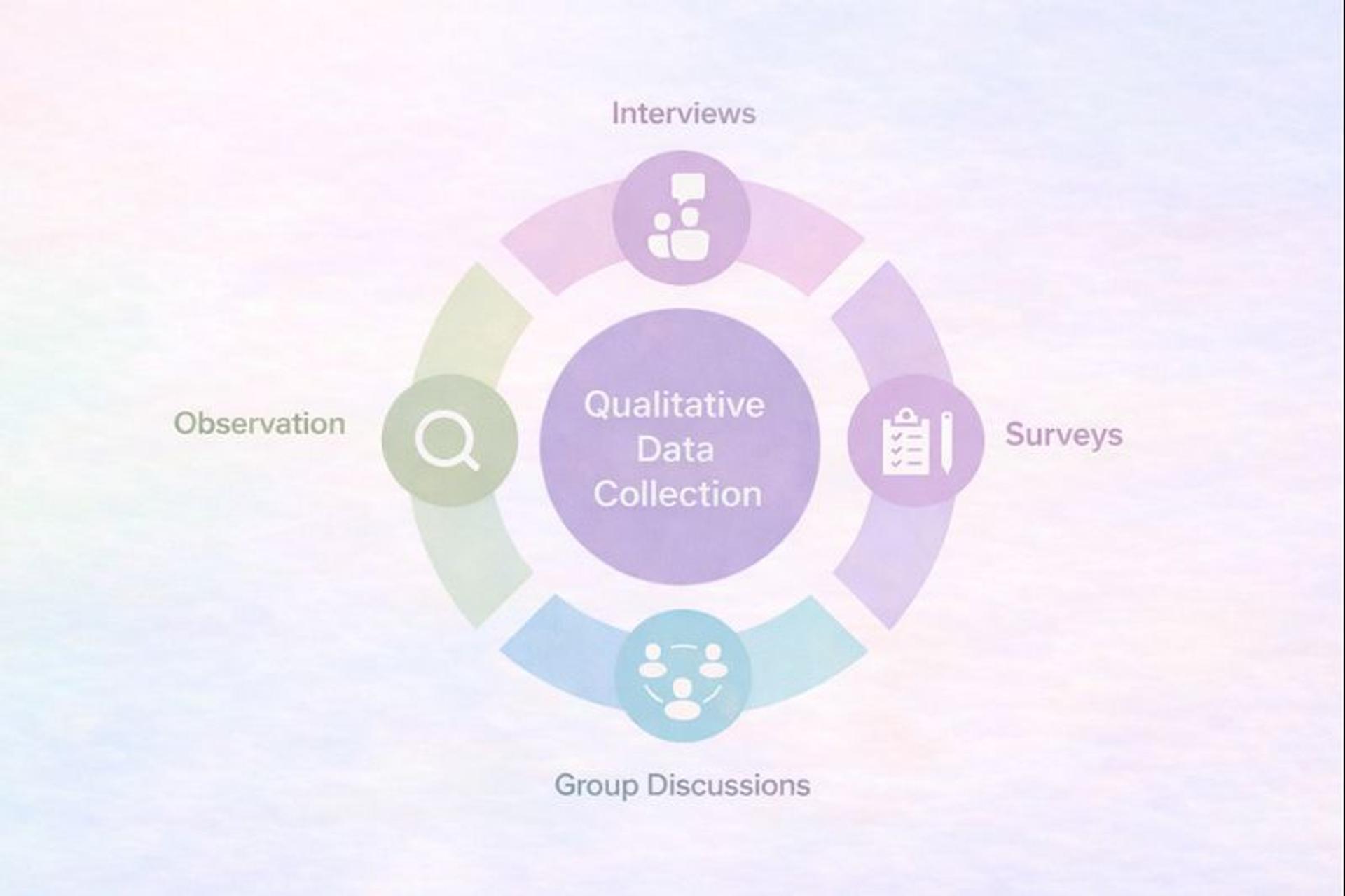
Examples of Diary Study in UX Research
Observing Mobile App Engagement
Imagine a company launching a fitness app and aiming to understand how users integrate it into their daily routines. Participants would be asked to document each interaction with the app — what prompted them to open it, what they did afterward, and any challenges they faced. This approach helps identify moments when the app adds value or creates friction, guiding future design and functionality improvements.
Exploring In-Store Customer Experience
A retail brand might use diary studies to gain insight into the full in-store shopping journey. Shoppers would record their thoughts and behaviors — from their purpose for visiting, to how easily they navigated the store, their interactions with staff, and their satisfaction post-purchase. These insights can be used to refine store layouts, improve service touchpoints, and create a more seamless shopping experience overall.
Diary Study Tools
Here are 3 tools for conducting effective diary studies, especially in UX research:
1.
Dscout
Ideal for remote diary studies, Dscout enables participants to submit rich media entries (video, photo, and text) in real time. It’s perfect for capturing in-the-moment feedback and tracking user behavior over time.2.
Notion
This tool offer flexible databases and custom templates to track diary inputs over time. They’re useful when you need to manage multiple participants and export data for synthesis.3.
Google Forms + Sheets
A cost-effective and customizable option, great for smaller studies. You can create structured diaries with easy data capture and export for analysis, ideal if you’re on a budget or running a pilot project.
These tools balance depth, usability, and flexibility — essential for collecting meaningful, actionable diary study data.
FAQ
How Long Should Diary Studies Last?
Most effective diary studies run 2-4 weeks. This timeframe captures routine behaviors and usage patterns while maintaining participant engagement. Shorter studies miss behavioral changes. Longer studies risk participant fatigue and declining entry quality.
How Many Participants Do I Need for Diary Studies?
Plan for 10-15 participants for most UX research goals. This number provides diverse perspectives while keeping data analysis manageable. Smaller groups work for focused studies. Larger groups help when studying diverse user segments or complex products.
What's the Difference Between Diary Studies and Other UX Research Methods?
Diary studies capture longitudinal, authentic experiences in users' natural environments. Unlike interviews or usability tests that provide snapshots, diary studies show how relationships with products evolve over time. They're uniquely valuable for understanding emotional connections and real-world usage patterns.
Read more:
Conclusion
In summary, diary studies offer invaluable insights into user experiences, capturing nuanced details that traditional research methods may overlook.
By enabling participants to document their thoughts and feelings over time, researchers can better understand user behaviors, preferences, and challenges.
These insights inform design decisions and contribute to creating products and services that resonate more profoundly with users. As methodologies continue to evolve, future trends suggest a greater integration of technology to streamline data collection and analysis, potentially enriching diary studies even further.
Embracing these developments will ensure that diary studies remain vital in UX research, driving innovative and user-centric design.


About Clay
Clay is a UI/UX design & branding agency in San Francisco. We team up with startups and leading brands to create transformative digital experience. Clients: Facebook, Slack, Google, Amazon, Credit Karma, Zenefits, etc.
Learn more

About Clay
Clay is a UI/UX design & branding agency in San Francisco. We team up with startups and leading brands to create transformative digital experience. Clients: Facebook, Slack, Google, Amazon, Credit Karma, Zenefits, etc.
Learn more


